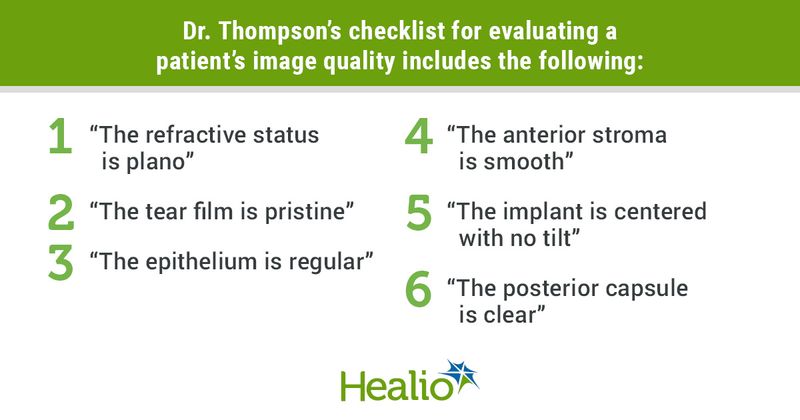Surgeon shares cataract, refractive pearls to improve patient outcomes, experience
Prioritizing patient image quality and understanding the business of ophthalmology are important steps for building a positive patient experience and culture, according to a presentation at Real World Ophthalmology.
Vance Thompson, MD, shared lessons he learned across decades as a cataract, refractive and corneal specialist to provide newer surgeons with knowledge on navigating modern multifocality and helping their patients reach their ideal outcomes.

“Modern-day multifocality is making so many patients happy,” he said. “Postoperatively, though, we really need to be thinking about how they are seeing that Snellen chart.”
It is important for surgeons to assess not only a patient’s visual acuity and refractive endpoint on a Snellen eye chart, but also their image quality. Especially important for Thompson is a patient’s low-light image quality, which may be an indicator of the health of the crystalline lens, as well as the epithelium and tear film.
Thompson’s checklist for evaluating a patient’s image quality includes making sure the refractive status is plano, the tear film is pristine, the epithelium is regular, the anterior stroma is smooth, the implant is centered with no tilt, and the posterior capsule is clear. In addition, there should be no vitreous floaters.
Part of building a positive patient experience comes from understanding the business of cataract and refractive surgery so surgeons can help their patients understand how a procedure will affect them financially.
“Help the patient understand what their insurance is going to cover ... and then what they are going to be responsible for,” he said. “Have all your patient education materials and forms reflect that.”
Additionally, Thompson said that educating patients on what they can gain and lose in cataract and refractive surgery between multifocal and monofocal IOLs, including how surgery may affect their reading range, is an important step for specialists to take to help patients claim their “optical independence” after surgery.
“Creating a patient experience is, to me, really important for getting rid of some of these traditions in medicine,” he said. “I actually call building a team culture and a patient experience ‘the big E,’ and I consider it the missing link between a good and a great practice in modern-day medicine.”

